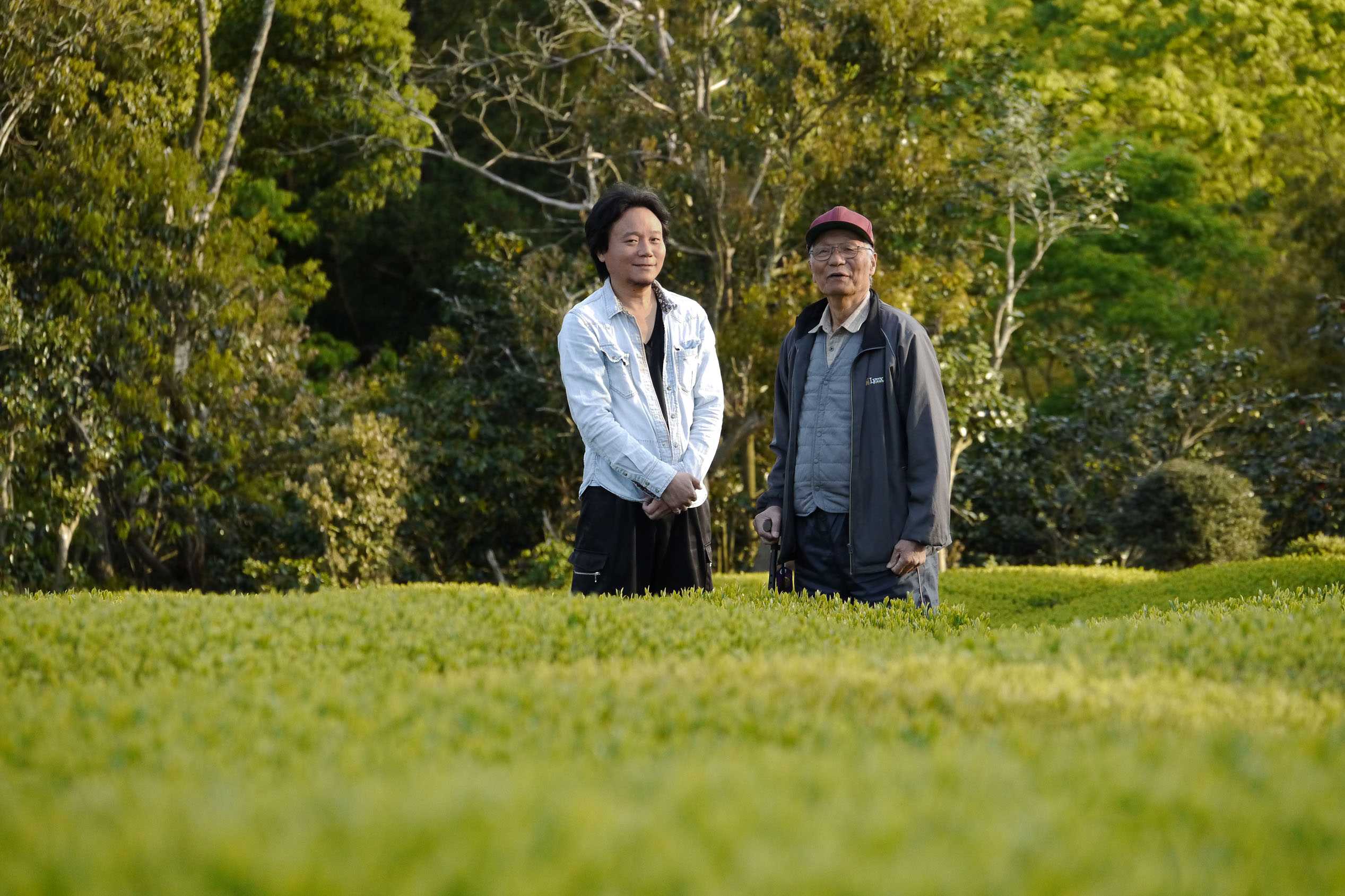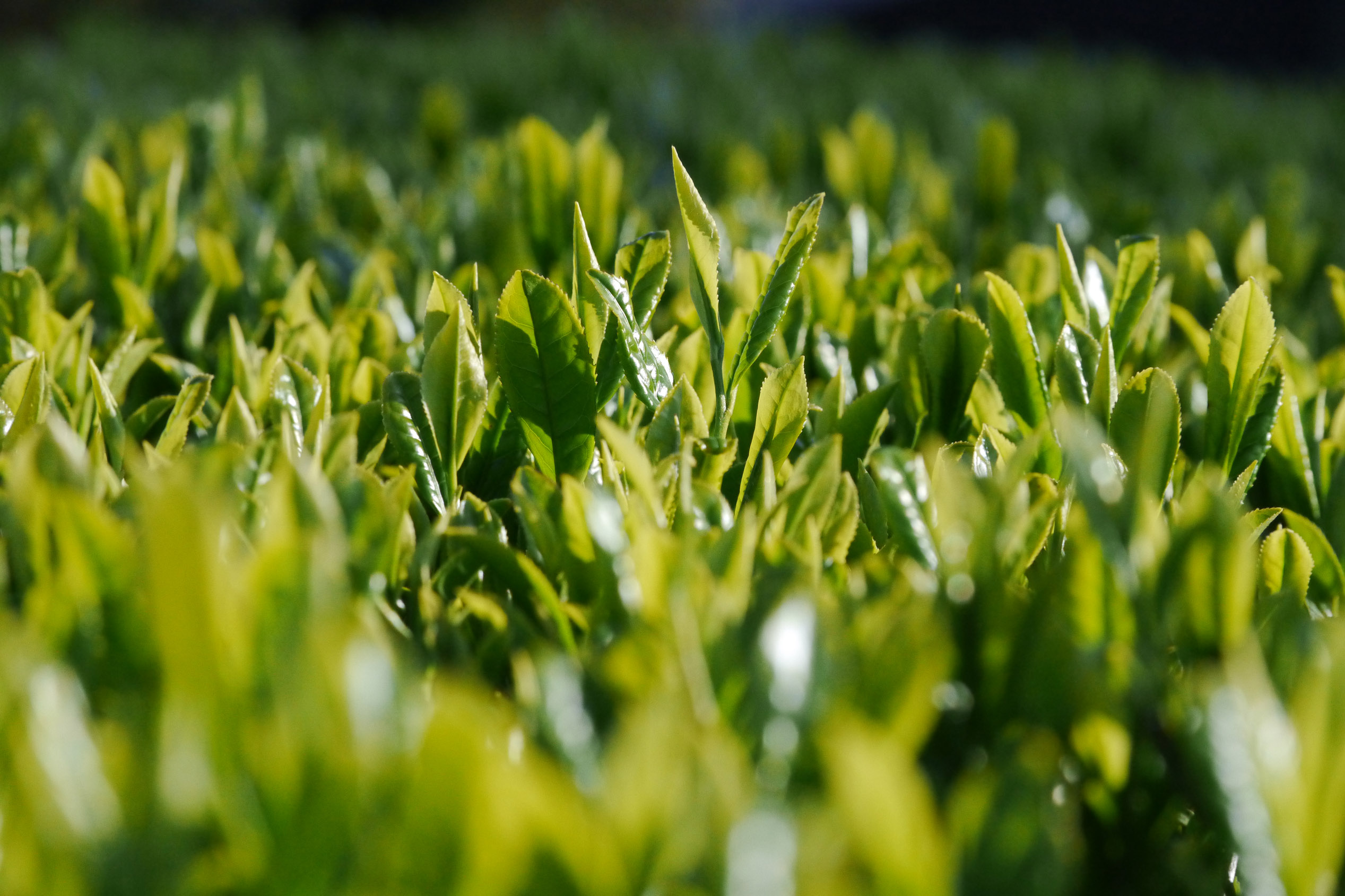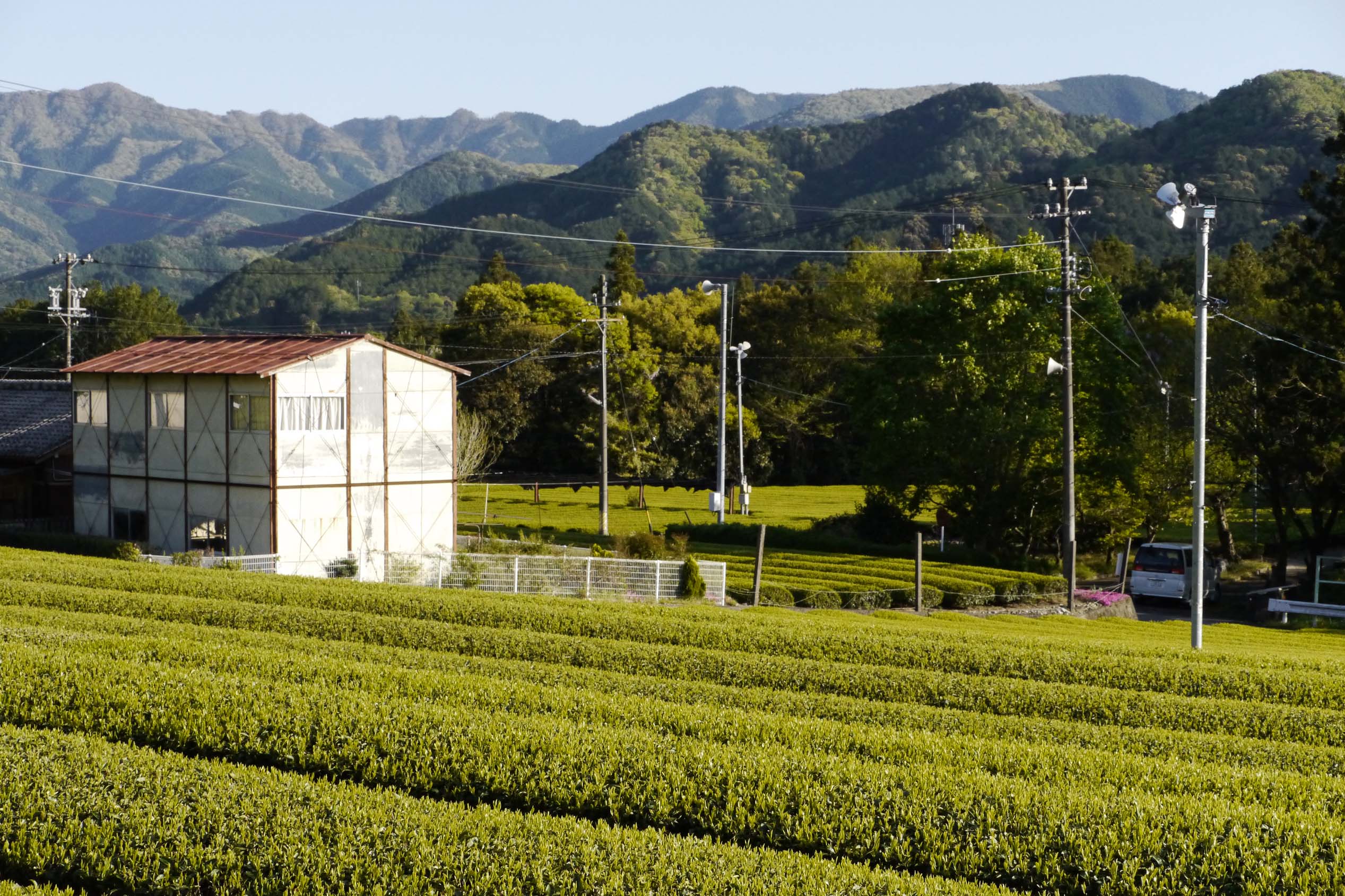It is our first tea garden visit this year! Finally we can admire the fresh green colour of the first sprouts of the year again. We are meeting Iwao and Kimihiko Hayashi. Here in Mie, the first sprouts are already visible but still very small. Kimihiko expects the first harvest of 2018 to start around 3rd or 4th May. To compare, in 2017 the first harvest day in Mie was 7th May.

This year is really crazy: First, for a long time it was extraordinarily cold with frost in March and the beginning of April. Then, quite suddenly, the weather turned warm and partly changeably-rainy, so the tea bushes grew very fast. During our phone calls just two, three weeks ago, we were told this year’s harvest in Japan will take place as usual or a bit later, yet then the situation changed all of a sudden. Now, an early or even very early harvest year is expected. In the southern prefectures of Kagoshima, Kumamoto and Miyazaki, the first harvest of 2018 has already started.

Although Iwao Hayashi – more than 80-years-old and great-grandfather by now – largely retired from work in the tea garden in mid-2017, the meeting with us is so important to him that he sits down with his youngest son Kimihiko and us. Our conversation turns to final processing and final heating. In an association of companies of the Japanese tea industry he heard that recently strong final heating is very popular for the Japanese market. With strong final heating, the leaves of various tea bush varieties largely lose their special and characteristic flavours. Moreover, with strong final heating, bitter and harsh nuances are largely lost. At the same time, teas produced in such a way develop nutty till roasty aromas. The taste of such stronger final-heated teas is relatively agreeable. Unpracticed tea drinkers can easily like this taste, which is called “kobashii”, as well. This tendency focusses especially on younger Japanese generations which cannot relate to very differentiated flavours – at least this is how the expectation goes. All these considerations are not about especially strongly final-heated tea sorts of the Houjicha category but about the degree of final heating of green tea sorts such as Sencha, Kabusecha or Tamaryokucha. Generally speaking, we find roast aromas, such as can be tasted in strongly final-heated Sencha sorts, also in many other food items, which are heated up to a slight or even strong browning. Our modern diet is full of roast aromas. Just think of the enormous amount of dishes which are roasted, baked or even grilled.

We, as well as Iwao and Kimihiko, rather prefer a different flavour direction: A weaker final heating, that means using lower temperatures, preserves the characteristics of each tea bush variety, location and soil. So, both region and tea bush variety are brought out far better in a more lightly final-heated tea. There are far more subtleties to taste. The tea is vitalizing and at the same time refreshing and temperature-regulating, even when it is infused with warm water.
Our conversation slowly turns to the topic of organic farming. Iwao talks about his experiences in the 1970ies when he still used pesticides. When he sprayed pesticides, he protected himself with a protective suit, gloves and several breathing mask on top of each other. Yet, after work, he suffered headache so bad he thought his head would explode. When he told his neighbours about this, they just said that the effect was not so bad on them – it was bearable. For Iwao, these headaches were the beginning of the conversion process to organic farming. He could not imagine that it was really necessary to use such chemicals as they were used up till then, even if the cooperative always kept propagating them. Until nowadays, many farmers cannot imagine that it is possible to produce good teas without pesticides. Today Iwao tells us that his neighbours are more open to his ideas than around 40 years ago, when he – a pioneer of organic tea cultivation – was still looked down on.
Before we take some time to look at the tea garden, we talk about the creation of a new tea: Iwao and Kimihiko Hayashi plan to produce it with a rare tea bush variety from their garden. When we walk through the tea garden where this new tea is planned to come from, an enchanting fragrance awaits us. You can look forward to something new from Iwao and Kimihiko Hayashi this year!
